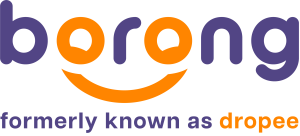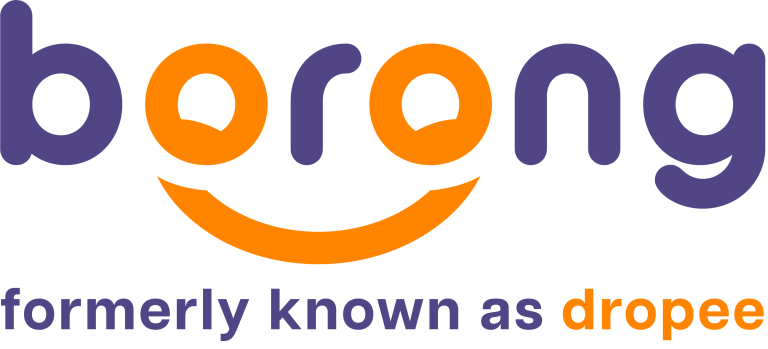Having supply chain visibility may seem like a simple task, but it can be difficult to achieve as it consists of so many moving parts.
From inventory shortages to unclear delivery, many businesses have been caught off guard due to a lack of awareness of what goes on in their supply chain.
This is where supply chain management (SCM) software plays an important role. With technology, it integrates everything into one cohesive flow, and prevents businesses from unpredictable disruptions.
Need more convincing? Here are more reasons why you need to have a good supply chain visibility:
What are the Benefits of Supply Chain Visibility?
Manage and Resolve Risks
Having a greater line of sight on your operations gives you a better handle on your inventory, thus minimising risks. It can also help you forecast demand to prevent inventory shortages during peak periods.
Reduce Costs
Greater visibility means that you’ll have full control over your business, which simplifies the decision-making process. With a clearer overview, you can break down logistic silos, identify bottlenecks and allocate resources efficiently.
Improve Access to Data
Real-time visibility allows you to capture valuable data that helps to improve your business. This includes developing customer-specific promotions and products, implementing cost reduction tactics and increasing customer service operations to better service your partners and customers.
Improve Decision Making
Having a connected and transparent network encourages transparency. For example, it allows business owners to make more informed decisions and get products to market at a faster rate.
Improve Customer Satisfaction
Supply chain visibility will allow you to zero-in on problems before they escalate, such as tracking deliveries and notifying customers ahead of time in the event of delays. This can help to improve communication with your customers, resulting in happier customers, better relationships and greater retention.
So What Should I Look Out For in a Supply Chain Management Software (SCM)?
By implementing a combination of technologies, companies can fully automate warehouse operations, optimise inventory management, improve delivery time, increase customer satisfaction and ultimately, boost sales.
When deciding on the right SCM technology for your company, these are the three main insights it must provide you with:
Sales Performance Data
This refers to the various sales metrics that are used to measure your business’s performance, such as…
Sales KPIs: total revenue, percentage of revenue from new business and existing customers, net promoter scores and cost of selling.
Activity sales metrics: the daily activity of your sales reps such as number of calls made, emails sent and demos performed.
Pipeline sales metrics: the average length of your sales cycle, total open opportunities and total closed opportunities.
Most importantly, your sales performance data should help you:
- Spot bestsellers and slow moving stocks in real-time
- Quickly address slow-moving stocks
- Track progress
- Identify new opportunities
- Forecast future sales performance
Inventory Forecasting
Also known as demand planning, inventory forecasting is using existing data or market trends to predict how much inventory you need to meet customer demand.
Accurate inventory forecasting means that you can avoid excess inventory – freeing up cash flow and allowing better distribution of resources. Having enough inventory on hand also prevents you from having to worry about out-of-stock items and lets you fulfill orders as soon as they’re placed.
Customer Relationship Management
73% of B2B executives say that customer expectations for a highly personalised customer experience is more important than ever.
How you interact with your customers plays an integral role in the success of your business – and having the right customer relationship management (CRM) software can make all the difference. The best CRM software helps you keep track of all the touchpoints your customer uses to connect with your business.
With everything in one location, businesses will always have a 360-degree overview of their customers. This not only lets businesses create relevant and customised messaging on products, pricing and promotions, it also ensures more consistent communication across multiple channels.
Levels of Supply Chain Management Adoption
For businesses planning to optimise their supply chain strategy, the pathway involves a gradual adaptation of their current business practices.
However, the adoption process can occur at various levels, depending on a business’ technological proficiency.We recommend going at your own paceTo help you gauge where you stand, we break it down into four different stages based on a business’ readiness to transition into digitised workflows.
#1 Amateur
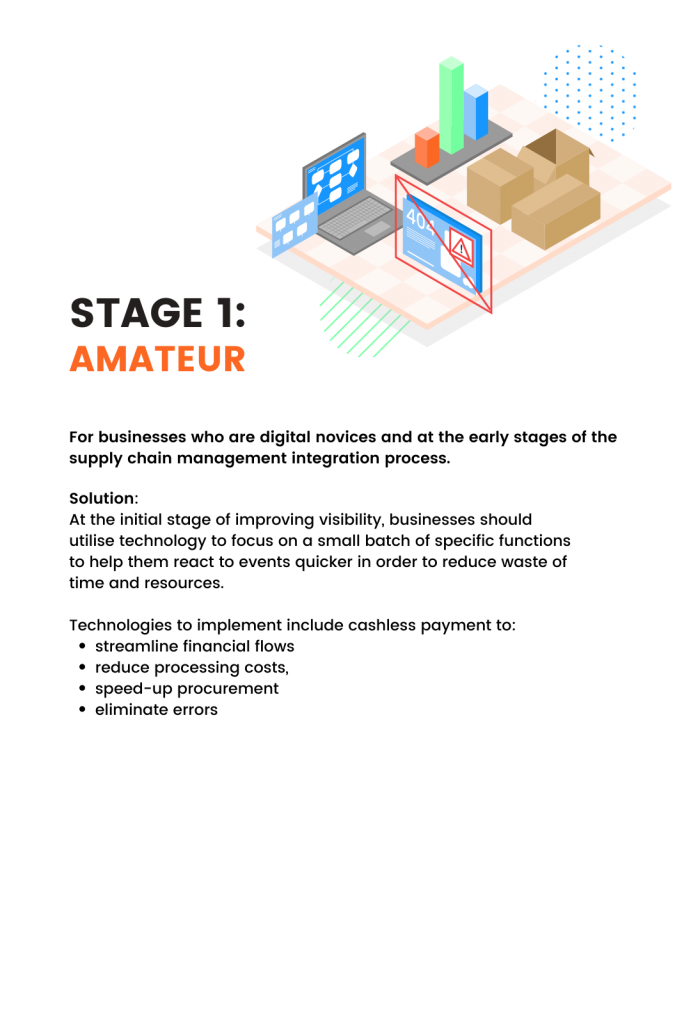
#2 Eager
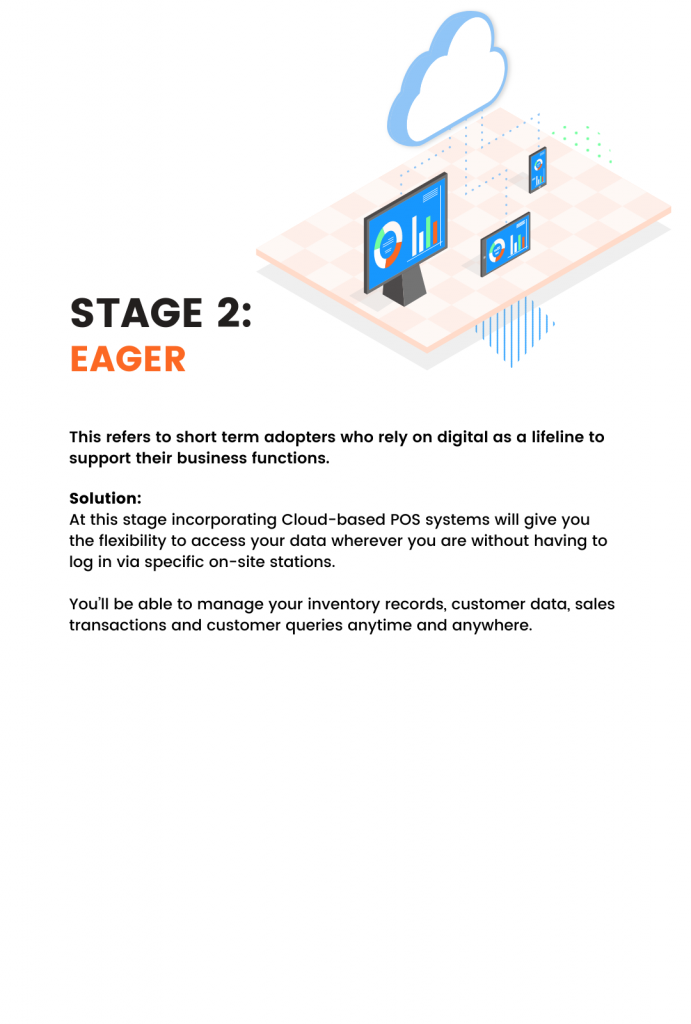
#3 Enlightened
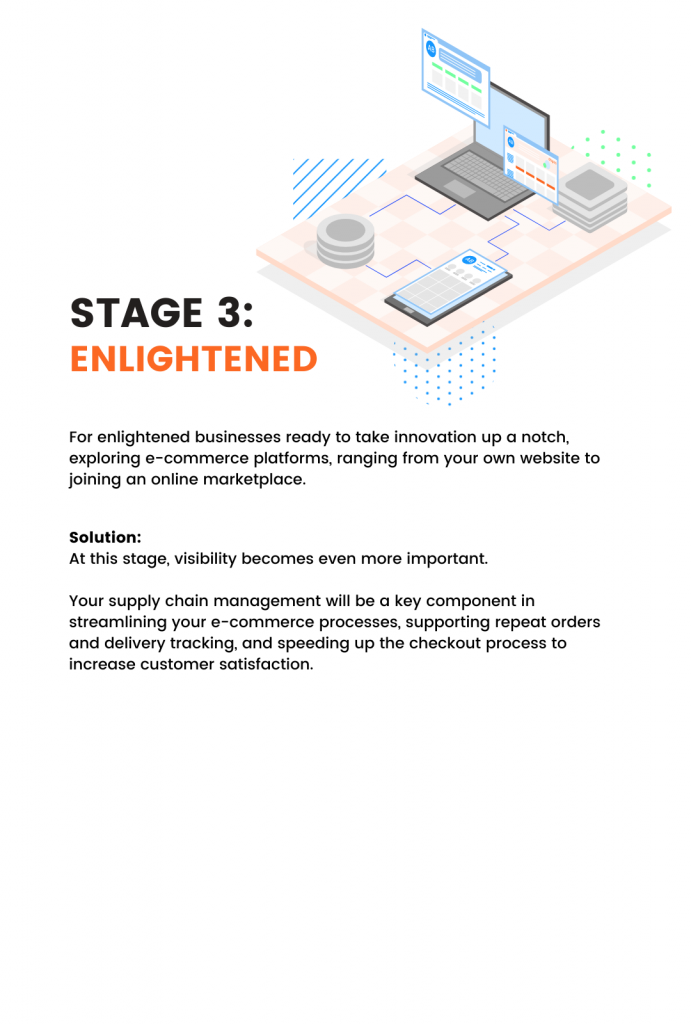
#4 Empowered

Optimise your B2B Sales with Dropee’s Supply Chain Strategy Guide
As technology advances and customers continue to become more discerning, efficiency and connectivity are essential for businesses to move forward and remain profitable.
Knowing this, we have created a guide to help businesses at various stages of the digital adoption process drive sales by building a strong supply chain strategy in five steps.
From tips on how to improve your customer relationships to performance tracking, access the guide here and get started!

